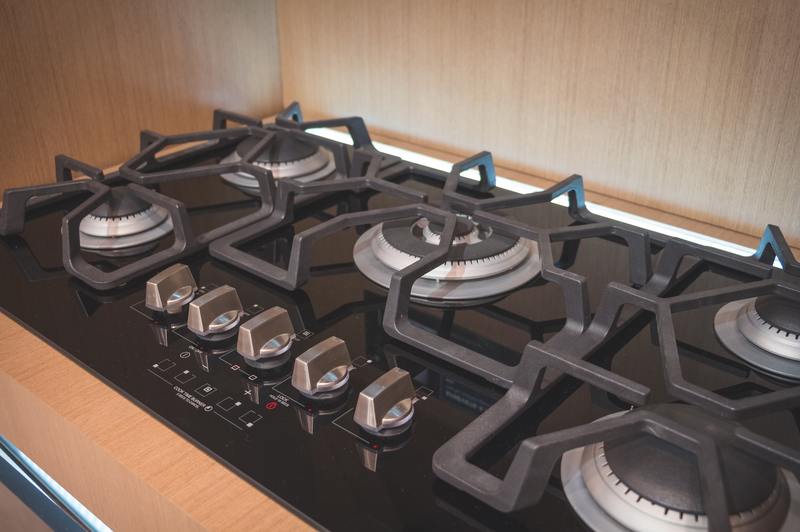Do you want to know how to get mildew off stove? Just read through this article and learn the five ways we have put up to help you.
Mildew in the kitchen poses a big problem as it can threaten your health. It is why as soon as possible, you have to get rid of it before it gets on the food you cook and eat.

Causes Of Mildew On Kitchen Stove
Several factors contribute to mildew build-up in your kitchen stove, and we will discuss them one by one.
1. Moisture
Regardless of the type of surface, moisture is the number one cause of mildew growth. Since stoves are usually exposed to liquids like water when cooking, chances are the fungus will start growing on them, especially if you don’t clean them regularly.
2. Trapped dirt
Kitchen stoves are very prone to dirt build-up. As we know, mildew feeds on accumulated organic materials, so it likely develops in dirty stoves.
3. Food residues
As kitchen stoves are used for cooking, it is usually hard to avoid small food particles from spilling on them. The thing is that these small food particles that we fail to notice decay over time and serve as food for the growing mildew spores.
4. Humidity
Regardless of whether the stove uses gas or electricity, it releases an abundant amount of heat. It creates a humid environment that is very suitable for mildew growth.
Getting Rid Of Mildew On The Stove In 5 Ways
Cleaning the mildew in stoves is not entirely different from dealing with other surfaces. Here are five natural and easy ways to do it:
1. Using hydrogen peroxide
Hydrogen peroxide is a very common component of your medicine cabinet, so it is very convenient to use. It has antifungal and antibacterial properties that make it effective in cleaning mildew.
Although hydrogen peroxide is not flammable, it is a very good oxidizer. It is why it is essential to be extra careful when using it or instead consider using other ways as it is not the best option we can recommend.
2. Rely on the power of white vinegar
Vinegar is a very effective natural remedy when it comes to killing mold. It can naturally clean, disinfect, and deodorize various surfaces.
To use this, you can either dilute it with water (it makes it less harsh) or just use it pure. All you need to do is spray it on the surface, leave it for at least an hour, and voila!
Your kitchen stove is now shiny, clean, and mildew-free!
3. In baking soda, we trust!
Baking soda has always been a reliable buddy in removing nasty odors in various parts of our home. Not only that, but it is also a very effective weapon to combat mildew.
Just add ¼ tablespoon of baking soda to water and use it to spray the mildew away! Let it sit for a good amount of minutes, and use a scrub brush to remove mildew spores and baking soda residue.
4. Try essential oils
As much as essential oils are very pleasant to smell, they are as tough when dealing with mildew. Tea tree oil, clove oil, cinnamon, and thyme oil are some that you can use to ward off mildew.
They do not just combat mold but also prevent the spores from coming back. To use them, just combine a teaspoon of the oil of your choice with a cup of water.
Spray the solution into the stove surface and let it dry for at least an hour. Then, wipe it off with a clean and dry towel.
5. Go natural with lemons
Lemons are a staple when it comes to killing mold and leaving nothing but disinfected surfaces behind. To use this tip, just squeeze a few lemons and pour the juice over the affected surfaces.
Let it sit for about five minutes or longer, depending on the degree of damage, and wipe it off using a clean, damp towel.
If your fridge was also damaged by mildew, here is an article on how to remove mildew from refrigerator gasket that can help you. If a stinky sink is your problem, go check out this guide on how to get rid of mildew smell under sink.
Preventing mildew in kitchen stoves
Although there are several ways to free yourself from mildew, it is still best to prevent it firsthand. Mildew can develop on humid and damp surfaces like your kitchen stove.
To avoid the disgusting mildew from growing, it is essential to regularly clean your stove. If possible, it is best to clean it after cooking.
Keep your stove dry all the time as much as possible. Also, wipe off food and water spills immediately to avoid moisture and dirt build-up.
Conclusion
Maintaining cleanliness not just on the food we eat but also on the things we use to prepare them, like stoves, is in no doubt, essential. You will waste no time in learning how to get mildew off stove as it will allow you to enjoy tasty and fungus-free dishes.
